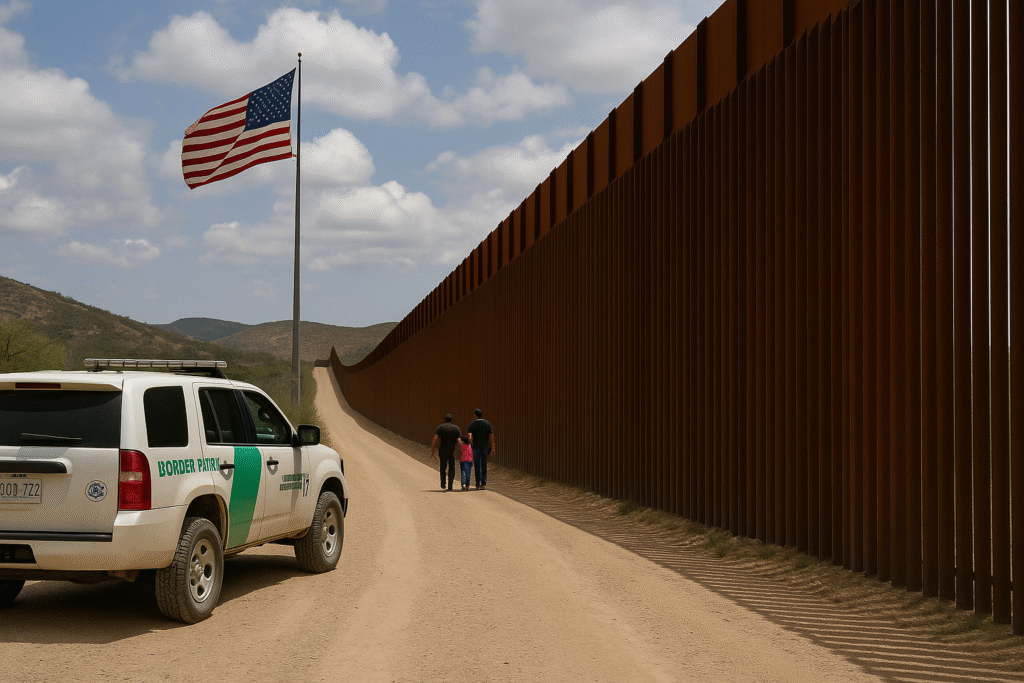The U.S.–Mexico Border Today: Power, Pain, and Political Pressure

Something heavy is happening at the U.S.–Mexico border—people’s lives are criss‑crossing tension lines, politics, and harsh reality. You see headlines about military zones, deportations, and migrant suffering. But behind every stat is a human face.
How We Got Here
Since early 2025, migration has become one of America’s fiercest battles. The new administration declared a border emergency on Day One and began deploying thousands of troops. In January, 1,500 active‑duty soldiers joined existing military forces and National Guard units at the border, tasked with building barriers and helping deport migrants.
Then came the creation of “National Defense Areas”—military‐run zones spanning Texas and New Mexico, where troops can detain, search, and control access across hundreds of miles. This militarization marked a new frontier in U.S. immigration enforcement.
What’s Going On Now?
Right now, border policy feels like an emergency on replay. A federal judge just blocked a sweeping asylum ban, ruling that the president overstepped legal boundaries. And at the same time, Congress has passed massive legislation funneling billions into border enforcement—ICE’s budget has ballooned, with promises of hiring 10,000 new officers and expanding deportation capacity to a staggering scale.
On ground level, Mexican forces have pitched in too. Mexico’s National Guard deployed around 10,000 members to border regions in a coordinated effort with U.S. authorities.
Migrant families are bearing the consequences. A young U.S. citizen girl is now living in rural Mexico after her undocumented parents were deported despite her medical needs. Other families have self‑deported, terrified they’d lose everything—and then arriving at the border only to be stripped of possessions and abandon their cars.
Voices & Human Impact
Can you imagine watching your safe zone vanish? That’s the daily reality for so many families. People self‑deport out of fear, not choice. Or worse—they are sent back without due process, ending up imprisoned indefinitely in foreign facilities.
Advocacy groups and immigrant‑rights activists warn that policies like the Laken Riley Act strip asylum seekers of basic human rights and create loopholes for wrongful detention. Critics say the expanded ICE workforce—offered huge signing bonuses—risks stretching standards and oversight.
On the other side, the administration argues that these actions deter drug smuggling—especially fentanyl—and reduce migrant floods. Politicians who support the measures say they’re restoring order and protecting communities.
What’s at Stake
- Legal battles: Courts are pushing back—Texas’ attempt to enforce state-level immigration law was blocked by an appeals court reaffirming federal authority.
- Humanitarian cost: Young children left without care, families losing homes, and asylum claims dismissed—even for vulnerable individuals with medical needs.
- Political tension: Trade talks are intertwined with migration policy. A looming tariff increase—from 25% to potentially 30% on Mexican goods—was just delayed for 90 days as the two governments negotiate migration cooperation.
- Militarization: National Defense Areas let soldiers detain civilians in areas once regulated by civil law. That shift raises fundamental questions: who polices the border—and how much power is too much?
What’s Next?
Three paths forward seem to be unfolding:
- –– Federal courts may continue striking down aggressive asylum restrictions and resisting expansions of state power.
- –– Immigration enforcement will likely escalate further—ICE will keep hiring, detention capacity will grow, and people will face increased risk of removal.
- –– On the diplomacy front, trade and border policy are being tied together. Mexico has slowed deportation flights, resisted military overflights, and insisted on phased reopening of border crossings for agriculture—all while navigating U.S. trade pressure.
A Human Story
Take the Coria‑Leon family. They were building a life in Arizona—jobs, school, modest dreams. They left voluntarily, afraid. At the Mexican crossing point, officers seized their vehicle and savings. Their life collapsed in minutes. That’s the emotional real beam shining through abstract policy debates.
Conclusion: More Than a Border
This isn’t just a geographical or political boundary. It’s a moral fault line—a question of values. Do we enforce laws at the expense of human dignity? Do we balance trade and security at the risk of uprooting families?
We stand at a moment where policy isn’t just numbers—it offers futures or erases them. As military checkpoints rise, deportation flights mount, and courts clash with politicians, real lives hang in the balance. The choices made now echo far beyond the Rio Grande.